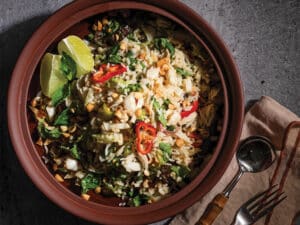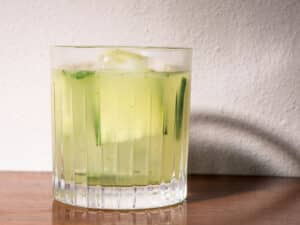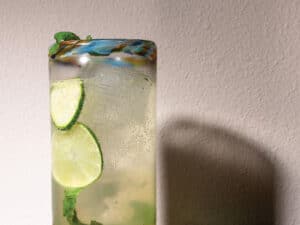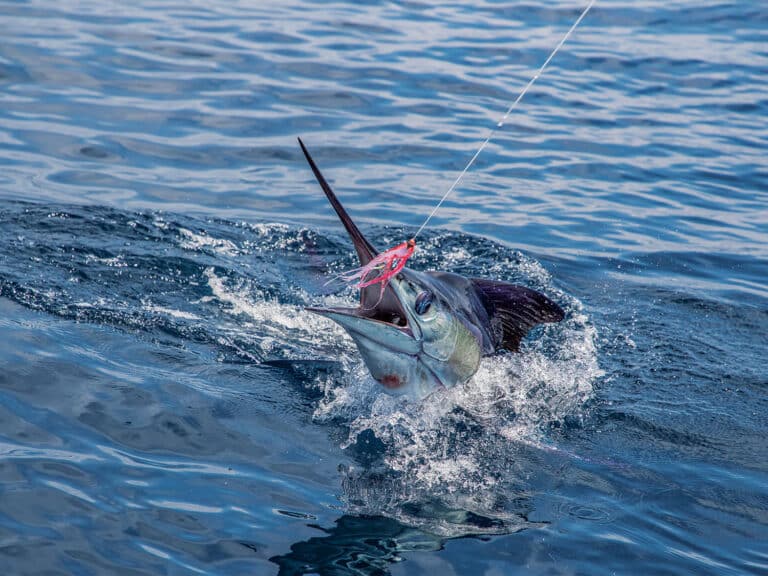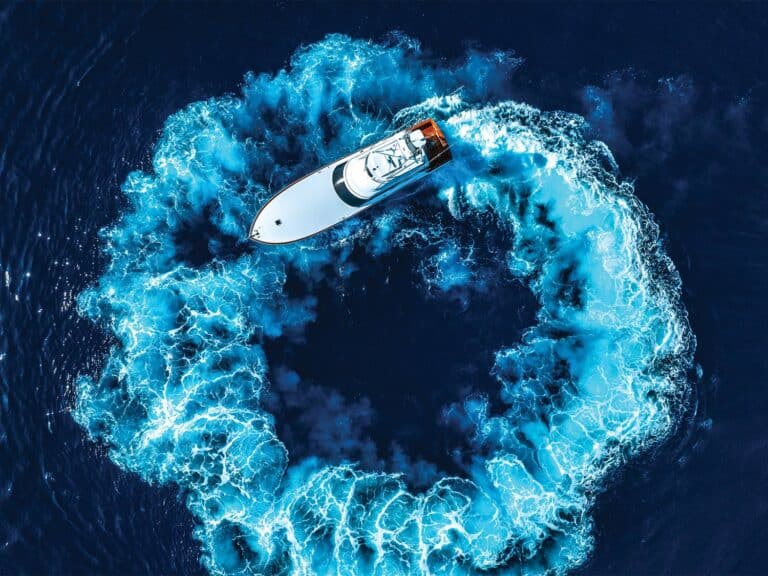
Fishermen and hunters share many ideals: a yearning for adventure, an affection for fellowship, and an appreciation of food. World travel and shared experiences are two of the things that bring us together, but sharing a meal is the one thing that cements that brotherhood.
Over the years, we have recognized that there really is a good amount of crossover when it comes to fishing and hunting. If you walk the docks, you’ll notice that more crews are eating “at home,” choosing to prepare their meals themselves rather than dining out. The fruits of these outdoorsmen’s labors become meals for friends, family and, sometimes, complete strangers. Venison backstraps, duck breasts and even wild hog can be found in the Sub-Zeros of these traveling boats. And while freshly caught fish will always grace the plates of many owners and crews, the occasional game specialty makes an appearance as well, harkening back to a time when breaking bread with your adversary proved to be a good way to patch up any remaining discord.

Adventure keeps our lives exciting, fellowship bonds us with those who have the same passions, and appreciation is simply the recognition of something we perceive as good. Without these things, life can be pretty boring…and lonely. To me, the great outdoors evokes an admiration of a work by something larger than myself. The smell of the sea and the quietness of the woods somehow always launch me back to the past, where life was simpler and the world ahead was largely unexplored. And the smell of good food propels me back to my childhood, where, in my mind’s eye, I can reach out and touch my grandmother as she stands in her kitchen preparing Sunday supper.
Life itself is an adventure—full of wonder and jammed with knowledge, and is a constant reminder of where we’ve been, where we’re going, and where we’ll end up. So, whether you prefer to adventure on land or by sea, these recipes are an example and culmination of that adventurer prowess, and are sure to please even the pickiest eaters. From elegant venison and pheasant to fresh ahi and grouper, we’ve got you covered for your next crew cookout—Big Green Egg and Tito’s style.

A History Lesson with Tito’s Handmade Vodka
Tito Beveridge started Tito’s Handmade Vodka in Austin, Texas, over 25 years ago. You’d think with that last name, his future would lead directly to the spirits business, but it took more than one failure and more than one left turn to get there.
Tito thought he knew what he wanted to do with his life when he enrolled in the pre-med program at Vanderbilt University, but after working in a hospital one summer, the realization that healthcare wasn’t for him quickly settled in.
Tito came home to the University of Texas and got a job on an oil rig. He noticed that one man was working inside with air conditioning and thought: Who is that, and how much does he make? Turns out, that man was the resident geologist and made more than $1 million dollars a year. It wasn’t profound, but the idea of a science-based job and a seven-figure salary led Tito to pursue degrees in both geology and geophysics at UT.
After graduating, he landed in Venezuela running heli-portable dynamite seismic crews and then managed groundwater geology in Colombia. It was searing hot and arduous. As his feet sloshed in sweat in his boots, he knew that he needed to pivot again.

Back in Texas, Tito started his own oil company. Months later, Operation Desert Storm sent gas prices tumbling, leaving him with a failed business and barrels of debt.
Down but not out, he bought some cheap vodka, threw habanero chilis into each bottle, infused the hooch, and jarred it as gifts. It wasn’t fancy, but people loved it.
Still searching for his path, he got into mortgage brokering. Was it his dream career? No, but it led to the greeting that changed the trajectory of his life. At a party, a stranger said, “Hey, you’re the vodka guy!” Tito corrected him by replying, “You mean the mortgage guy.” The man then proceeded to praise the stories of Tito’s infused vodkas, which got him thinking, what if he could be the vodka guy?
One night soon after, a television broadcast came on instructing viewers on how to uncover their passions: “Find the intersection of ‘what you love to do’ and ‘what you’re good at.’” Tito drew a line down a sheet of paper and made his lists. The result? A vodka company.
Flavored vodkas were already lining liquor-store shelves, so what he needed was a “vodka so smooth, you could drink it straight.” A vodka-flavored vodka.
Tito built a 998-square-foot shack in rural Austin using junkyard parts, guided by photos of moonshiners and Prohibition-era busts. Eventually he was making the smoothest vodka around. But he hit a wall. No one would invest. Backers said he would never get permits. Texas had never had an operating, legal distillery. So he racked up 19 credit cards and funded the business himself.
He pored over Texas code and challenged the laws, eventually getting the permits no one thought he could. He hand-bottled, glued on paper labels, screwed on copper caps, and almost never slept.
He gave away his vodka always with one request: “If you like it, tell 20 of your friends.” They did just that. Word spread, and distributors came on board.
Twenty-five years later, Tito’s Handmade Vodka fills glasses around the world. Once a boot-strapped operation, Tito’s has grown into a brand known for its award-winning product. Thank you, and here’s to 25 more!

Big Green Egg: The Kamado
ig Green Egg is the undisputed leader in modern kamado grills, but the technology behind the Big Green Egg is anything but contemporary. Modeled on the clay vessels that were fueled by wood or natural charcoal during the Chinese Qin Dynasty, and later used by the Japanese in the third century, this style of grill was “discovered” by US service members during World War II. American serviceman and entrepreneur Ed Fisher experienced the amazing flavors of a meal prepared on a traditional clay kamado cooker, sensing that there might be an interest back home.
Ed opened his first Big Green Egg store in Atlanta in 1974, where he sold these simple clay cookers based on the same design and materials that had been used for thousands of years in Asia. The foods coming from these early versions won over many fans for the flavor they imparted, but the low quality and inferior thermal properties of these clay kamado cookers made them inadequate for regular, repeated use.

Ed and his team of engineers set out to make the Egg better by using high-grade ceramics initially developed for the NASA Space Program to withstand high temperatures. The engineers worked tirelessly to find ways to improve the design, and the result was a revolutionary kamado cooker that is stronger, more durable, and provides better thermal insulation than anything else on the market.
The “reengineered” Big Green Egg now allows users to grill, smoke, roast and bake at exact temperatures of up to 750 degrees Fahrenheit by easily adjusting the simple-to-use airflow systems. The airtight cooking chamber retains heat from its all-natural lump-charcoal fuel to keep food moist and flavorful. And with improved quality and durability, the Big Green Egg now carries a lifetime warranty.
From the ancient and humble beginnings of yesteryear, the modern Big Green Egg is enjoyed around the world by grillers, chefs, cooks and foodies who are brought together by a passion for live-fire cooking on a grill that delivers not only great-tasting results, but simplicity and unmatched versatility as well. Here’s to the future!
Sponsored by Tito’s Handmade Vodka and Big Green Egg.
